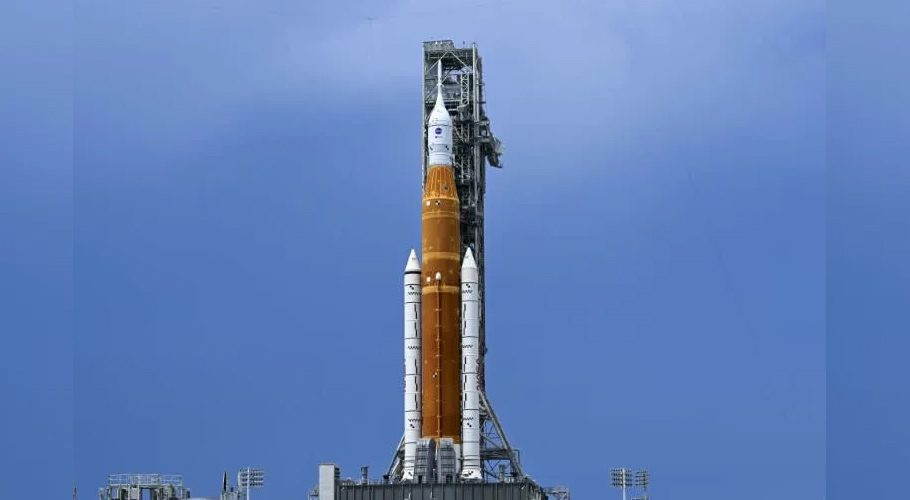CAPE CANAVERAL: For the second time in five days, NASA on Saturday halted a countdown in progress and postponed a planned attempt to launch the debut test flight of its giant, next-generation rocket, the first mission of the agency’s moon-to-Mars Artemis program.
The latest attempt to launch the 32-story-tall Space Launch System (SLS) rocket and its Orion capsule was scrubbed after repeated failed attempts by technicians to fix a leak of super-cooled liquid hydrogen propellant being pumped into the vehicle’s core-stage fuel tanks.
Pre-flight operations were officially called off for the day by Artemis I launch director Charlie Blackwell-Thompson about three hours before the targeted two-hour launch window was due to open at 2:17 p.m. EDT (1817 GMT).
There was no immediate word on a time frame for retrying to launch the mission, dubbed Artemis I. But NASA could schedule another attempt for Monday or Tuesday.
NASA chief Bill Nelson said mission managers would convene later on Saturday to discuss a future launch opportunity, adding there was a chance that the rocket might be rolled back to its assembly building for further trouble-shooting and repairs.
If that occurs, the next launch attempt would be postponed until October, he said during a NASA webcast interview.
In a separate statement announcing the scrub, NASA said: “Engineers are continuing to gather additional data.”
An initial launch try on Monday was foiled by 11th-hour technical problems that surfaced during countdown, including a different leaky fuel line, a faulty temperature sensor and some cracks in insulation foam. NASA officials said those issues had been previously resolved to their satisfaction.
Launch-day delays and technical snags are not uncommon for new rockets such as NASA’s Space Launch System, a complex rocket with a set of pre-liftoff procedures that have yet to be fully tested and rehearsed by engineers without a hitch.
“This is part of our space program – be ready for scrubs,” Nelson said on NASA TV.
Rolling the spacecraft back to its assembly building would apparently be necessary if engineers believe the hydrogen leak is too tricky to repair on the pad. But NASA officials have yet to make that call.


































